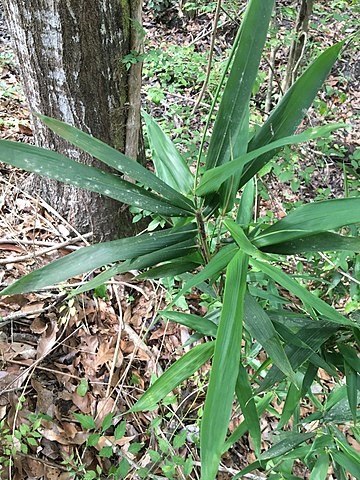Arundinaria, a genus of bamboo native to North America, offers several benefits when used in natural erosion control and ecological restoration projects. This group of bamboo, commonly known as rivercane, can play a significant role in stabilizing soil and preventing erosion in riparian and upland areas. Here are some of the benefits of using Arundinaria for natural erosion control:
Root Structure:
Arundinaria species have extensive and fibrous root systems that help bind soil particles together. These roots penetrate deep into the ground, providing stability to the soil and reducing the likelihood of erosion.
Erosion Prevention:
The dense growth habit of Arundinaria creates a natural barrier against erosion by reducing the impact of rainfall and surface runoff. This is particularly effective in hilly or sloped terrain where water flow can lead to soil erosion.
Slope Stabilization:
Arundinaria is well-suited for stabilizing slopes and banks along water bodies, including streams, rivers, and lakes. Its root network helps prevent soil slippage and landslides.
Filtration:
The bamboo plants can help filter sediment and pollutants from surface water as it flows through their root systems. This natural filtration process can improve water quality downstream.
Habitat Enhancement:
Arundinaria provides habitat and forage for various wildlife species. Birds, insects, and small mammals are known to use rivercane stands for nesting, foraging, and shelter.
Biodiversity Support:
By planting Arundinaria, you can help restore native plant communities and enhance biodiversity in riparian and upland ecosystems. It provides a valuable habitat for both flora and fauna.
Carbon Sequestration:
Like other bamboo species, Arundinaria has the capacity to sequester carbon dioxide from the atmosphere. This can contribute to mitigating the effects of climate change.
Aesthetic Value:
Arundinaria can enhance the visual appeal of natural landscapes. Its tall, slender stems and delicate leaves create a unique and attractive feature, particularly in riparian areas.
Historical and Cultural Significance:
Rivercane has cultural significance for some Indigenous communities in North America. Restoring Arundinaria can help preserve cultural heritage and traditional practices related to its use.
Low Maintenance:
Once established, Arundinaria is relatively low-maintenance. It can thrive with minimal human intervention, making it an attractive option for natural erosion control and restoration projects.
It’s important to note that Arundinaria should be planted in appropriate habitats and regions where it is native or well-suited to the local climate and soil conditions. Local expertise and guidance are essential when incorporating rivercane into erosion control and ecological restoration plans.
In summary, Arundinaria, or rivercane, provides a range of benefits in natural erosion control, including stabilizing soil, improving water quality, supporting wildlife, and enhancing biodiversity. When used in restoration projects, it can help create healthier and more resilient ecosystems while preserving cultural heritage and promoting sustainability.










